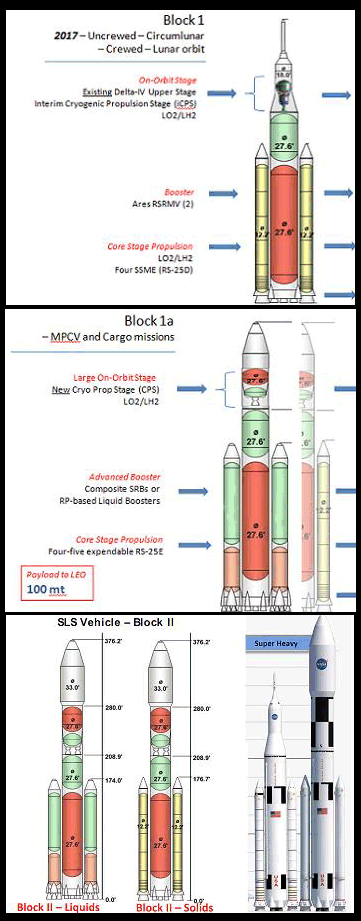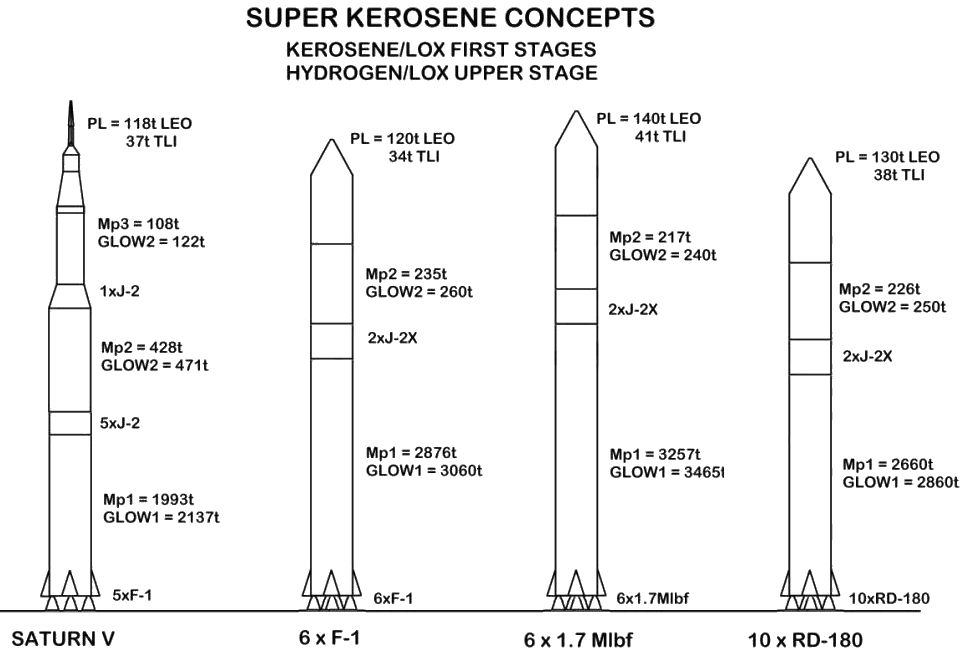phongn wrote:Seeing as nobody has demonstrated orbital refueling yet, I don't see how that's cheaper, easier and faster.
Estimates tend to hint at that, for example (fuel-depot architecture costing around half the Constellation-ish rocket mission architecture).
This PDF paper of the
United Launch Alliance states "
The total time from first launch to initial operational capability is anticipated to take approximately 6 months. The total launcher and depot hardware cost and services are expected be roughly $1B, including orbital checkout." at page 6. And goes on with "
A basic exploration effort (Figures 3-5) enveloping conceptual crewed and robotic asteroid and cis-lunar missions conducted at a rate of two to four missions per year would require a total lift by propellant suppliers to LEO depot of roughly 200t at an approximate cost of under $2B/year,- the equivalent of nine Atlas 552 vehicles like the one that launched Pluto New Horizons."
Compare to this project, a stated cost of 3 billions up to a 2017 (hoped) maiden flight (15 billions total), that will require then an unspecified amount of time afterwards and likely a lot more money to become finally usable to do anything.
Also the idea of man-rating it is complete and utter idiocy.
There are more than enough man-rated rockets already, and doing it isn't trivial in cost and time.
Even Constellation was smarter (the capsule/people was on a man-rated smallish rocket, the space vehicle on a biggish not-man-rated rocket).
And before you say "it's all paperwork", please remember that at the moment even this monster rocket is more or less paperwork too, so we are on common grounds.
Besides, aggressively eyeballing everything
I highly doubt the costs and times of development of an orbital fuel tank or a space tug (a modified upper stage like say a Centaur like most ULA's concepts) with some maneuvering systems, an arm and pumps will EVER approach the costs of developing a full-blown SHLV (with solid rocket motors, no less) more or less from scratch (as this proposal more or less is at the moment). The same about development times.
One of the key points is that there are already upper-stage engines that can do the job in a space tug/orbital depot, while you have to revive mouldy old projects or start anew if you want engines for a Big rocket.
I mean, why not give it a shot? even if it ends up needing 10 times more than the estimates (10 billions and 60 months-> 5 years) it will still be far cheaper and faster than (the estimated costs for) developing the abovementioned big rocket.
And can deliver much bigger things to more or less anywhere.
Of course lower development costs and less time will mean less money will go to the companies making it. And they don't really want that.

Further, if you want to move bulky and heavy stuff, small rockets just won't do it anyways.
I wouldn't call a 20-ton payload rocket "small", it's more a medium lifter.
Besides, what kinds of payloads would be too heavy and bulky to be launched in your opinion? Most stuff can be launched in 20-ish ton pieces (usually much less) from rockets we have already and assembled in space.
The issue is that with on-orbit assembly, you find that very big rockets aren't really needed. And goddamnit, we do have some kind of experience in on-orbit assembly after all. We even have a crewed space station that can do the job.
Let's give the ISS some kind of use every now and then.

Besides, you can always combine the two for even more payload

At roughly double the cost of using depots? Naah, not worth it.

Big rockets don't look very well in the open market. They are too expensive, and their big payload means they need a while to fill it up with sats and stuff that usually weights around 1-4 tons. Not to mention that most sats need to go to wildly different orbits, and doing it from the same rocket requires much more fuel for orbit insertion (i.e. a higher price because you now have less usable payload)
Fuel depots are instead very interesting for customers that want to send stuff to GEO.
Customer's rocket can lift up to say 5 tons to LEO but cannot go in GEO (too tiny payload to carry the fuel needed)?
Place a refuelling station in LEO, and even a cheap 5-tonner can do the job. Sats aren't that big.
So that's a helluva market that can be opened.
Destructionator XIII wrote:I think Canada launching an orbital refueling gizmo.
You mean this? It's a satellite refeulling tug. A big step in the right direction, but it's just related to what would be necessary here.
First, it is not working with rocket fuel (which is much harder to work with and is needed in much higher quantities).
Second, it is designed to go and reach satellites in their hapzard orbits, while a fuel tank is not designed to do much more than reboosts (with the outgassing H2) and fuel transfers to its ("dumb" as "they just stand still during the whole operation") customers (mainly upper stages).
This is what would do the first round of rocket fuel transfer tests. It's tiny and supposed to play with the liquid H2 that remains in the fuel tank of the expended stage of another payload it piggybacks the ride.



